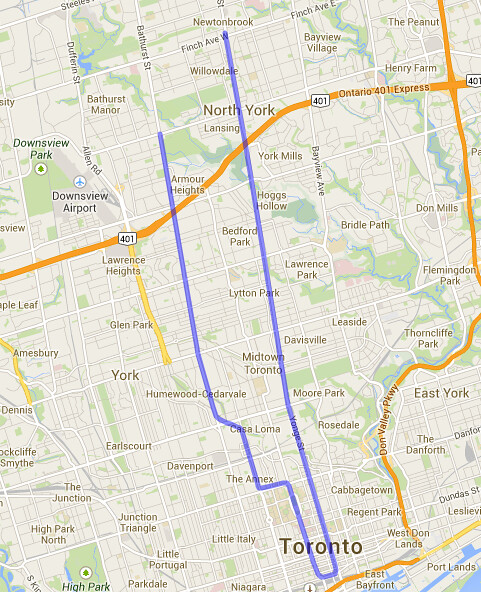salsa
Senior Member
Bathurst would have been far superior as the corridor. The whole street would have probably been built up like Yonge, which is almost entirely lined with dense buildings with storefronts meeting the street. It would have been better from a city building perspective. All you have around the Allen is sprawl that hasn't changed much since the 1970s. Ridership would have been higher. Anytime you build rapid transit in a transportation corridor, ridership is lower and neighbourhoods aren't that well served by the infrastructure because it's more isolated.
Totally agree, although I think Dufferin would be better than Bathurst since it's not as close to the Yonge line, would serve Yorkdale mall, and is easier to extend to York University. Bathurst is already quite urban without the subway, but imagine if Dufferin could have been lined with dense buildings and their storefronts. Instead, it's one of the ugliest streets in this city, with notoriously bad bus service.
Here are some hypothetical alignments of the two options


Last edited:





